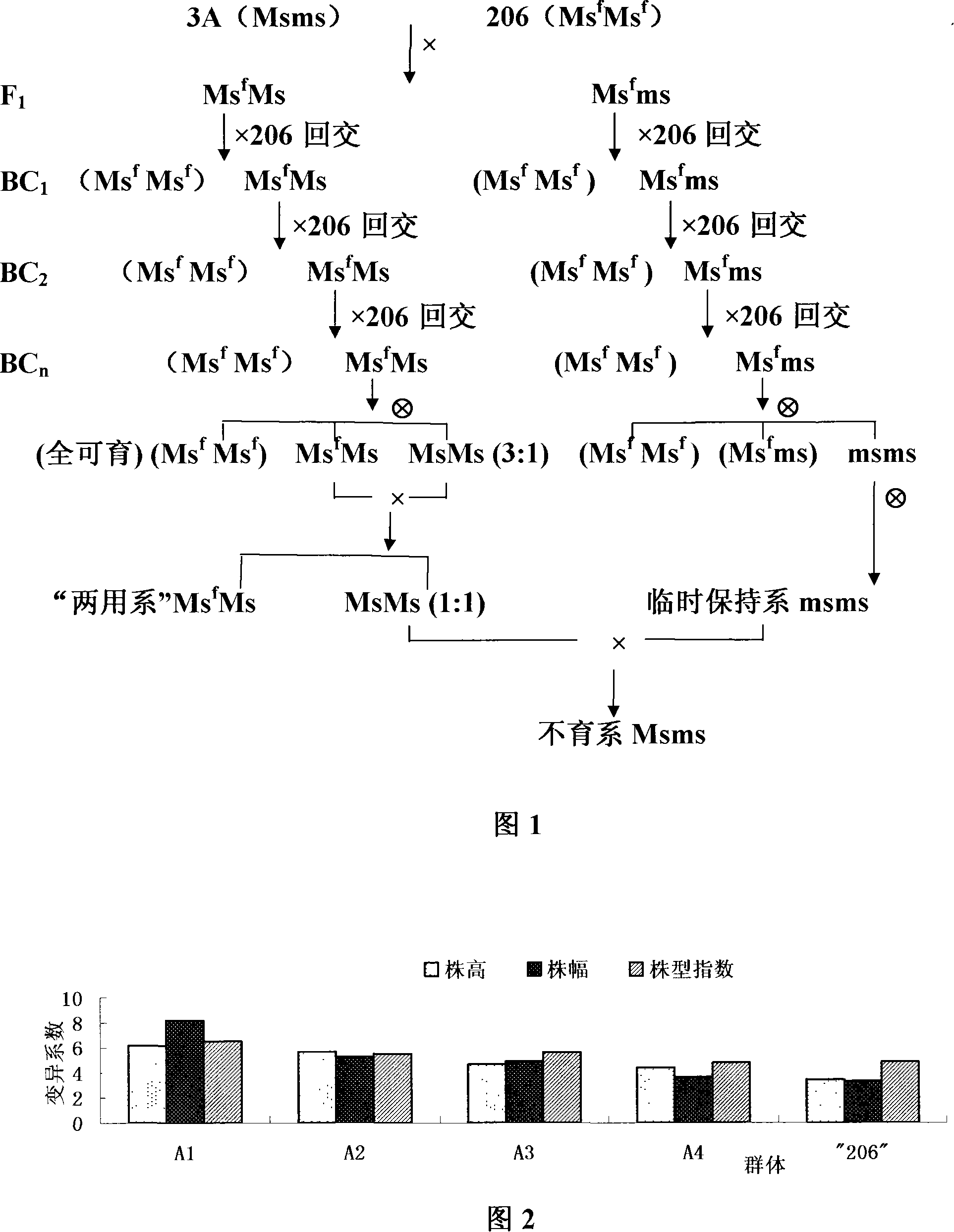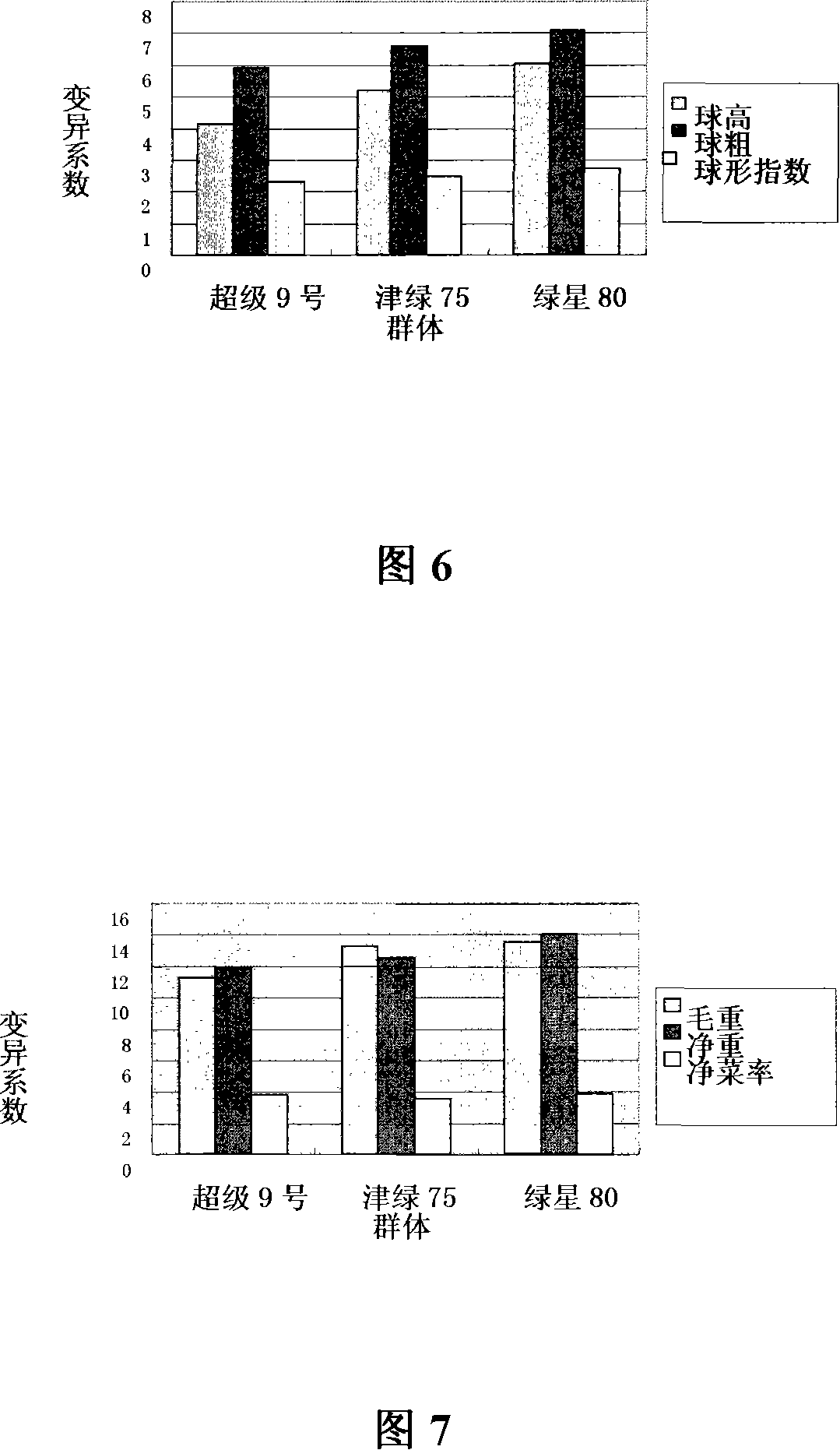Method for producing a generation of hybridization seeds of Chinese cabbage by using multiple alleles gene male sterility line
A technology of male sterile lines and hybrid seeds, which is applied in the fields of plant genetic improvement, botany equipment and methods, applications, etc., can solve the problems of multi-generation self-bred viability decline, influence of popularization and application, poor uniformity of hybrids, etc. Achieve the effect of reducing the cost of seed production and improving the purity of hybrids
- Summary
- Abstract
- Description
- Claims
- Application Information
AI Technical Summary
Problems solved by technology
Method used
Image
Examples
Embodiment 1
[0038] 1. Breeding of Chinese cabbage polyallelic nuclear gene male sterile line A4
[0039] In the spring of 2002, the sterile line 3A was used as the sterile source, and the fertile line 206 (fertility locus genotype MsfMsf) was used as the transgenic material, and the sterile line was transferred for each generation according to the transfer model in Figure 1.
[0040] That is, the sterile line 3A was crossed with the fertile line 206, and the sterility gene of the sterile line 3A was introduced; the obtained first-generation hybrid material F1 was respectively backcrossed with the fertile line 206 to obtain a backcross material BC1, and the backcross material BC1 was respectively combined with the fertile line Line 206 was backcrossed to obtain backcross material BC2, backcross material BC2 was respectively backcrossed with fertile line 206 to obtain backcross material BC3, backcross material BC3 was respectively backcrossed with fertile line 206 to obtain backcross materia...
PUM
 Login to View More
Login to View More Abstract
Description
Claims
Application Information
 Login to View More
Login to View More - R&D
- Intellectual Property
- Life Sciences
- Materials
- Tech Scout
- Unparalleled Data Quality
- Higher Quality Content
- 60% Fewer Hallucinations
Browse by: Latest US Patents, China's latest patents, Technical Efficacy Thesaurus, Application Domain, Technology Topic, Popular Technical Reports.
© 2025 PatSnap. All rights reserved.Legal|Privacy policy|Modern Slavery Act Transparency Statement|Sitemap|About US| Contact US: help@patsnap.com



